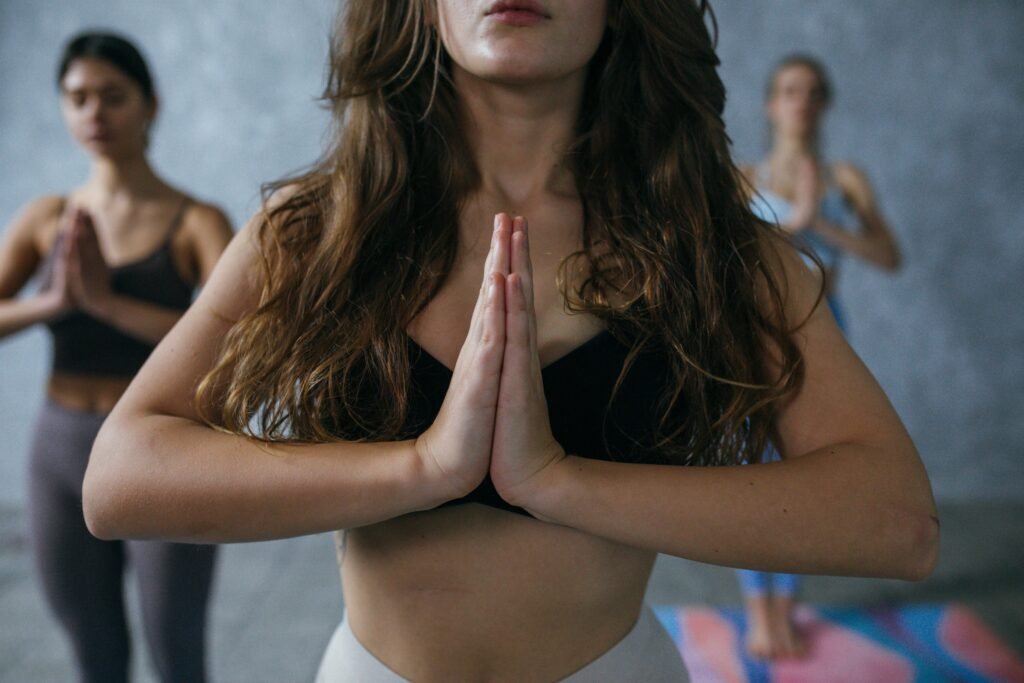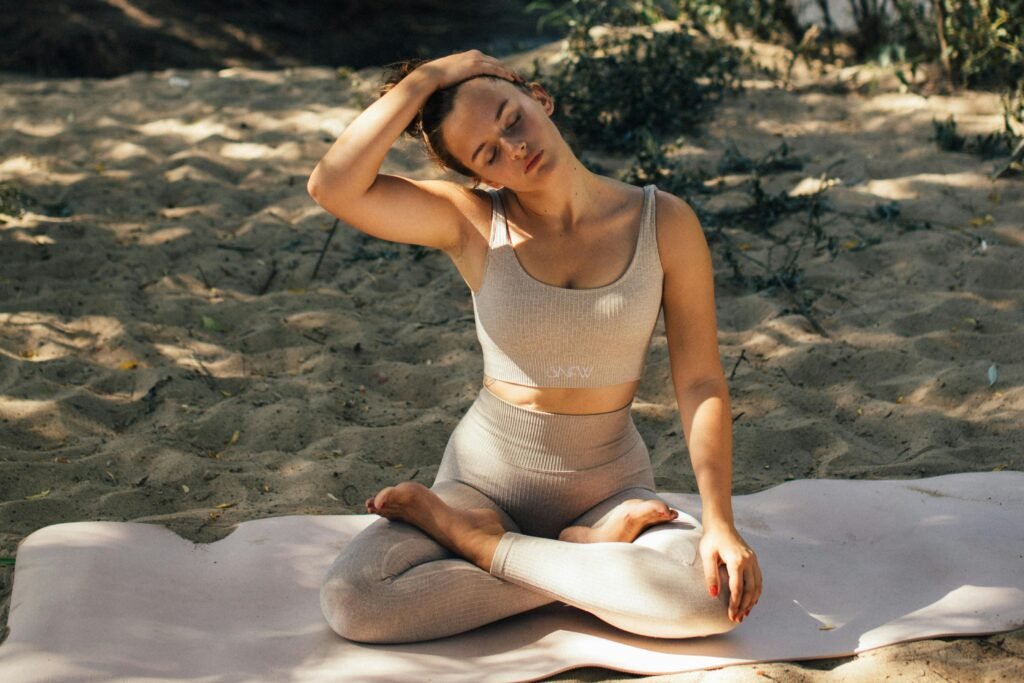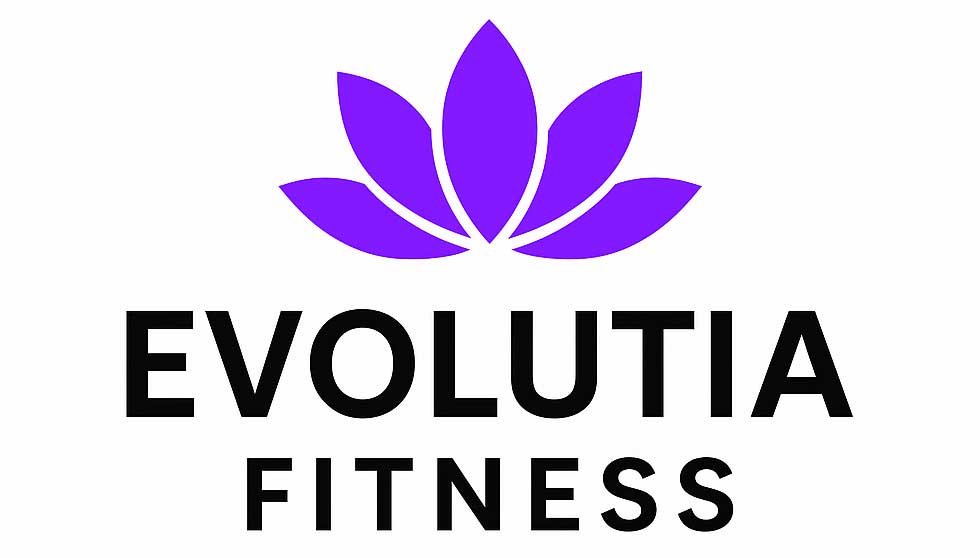Neck pain and stiffness can be a nagging thief, stealing your focus and cramping your style. Whether it’s from hunching over a laptop, stress, or an old injury, yoga offers a gentle, effective way to loosen tension and restore comfort. With targeted stretches and strengthening poses, you can ease that stiffness and move freely again. Let’s dive into what makes yoga for neck pain a hero—its benefits, the best poses, and how to practice safely to keep your neck happy – not stiff.
What’s Yoga for Neck Pain All About?
Yoga for neck pain uses low-impact poses to release tight muscles (trapezius, levator scapulae), improve mobility, and strengthen the neck and shoulders to prevent future strain. It’s grounded in ancient practices but backed by science—studies show yoga reduces chronic neck pain and stiffness by up to 60% (Cramer et al., 2013). Poses like Thread the Needle and Cat-Cow gently stretch, while others like Supported Fish build support (Iyengar, 1976). Fun fact: yoga’s neck relief roots trace back to 500 BCE, with Vedic texts praising “gentle twists” for vitality (Feuerstein, 1998).
It’s not about extreme bends or headstands. Yoga for neck pain is accessible—think slow movements, props like blankets, and mindful breathing to calm tension. Perfect for desk jockeys, athletes, or anyone with a stiff neck. Let’s explore why it works and how to do it right.

How Yoga for Neck Pain Helps
Neck pain often stems from stiff neck and shoulders muscles, poor posture, or stress clenching your shoulders. Yoga tackles these:
- Releases Tension: Stretches like Thread the Needle loosen tight traps and scalenes (Michalsen et al., 2012).
- Improves Posture: Poses like Mountain Pose align the spine, reducing neck stiffness (Cramer et al., 2013).
- Lowers Stress: Deep breathing cuts cortisol, easing muscle tightness (Westman et al., 2018).
A 2015 study found 9 weeks of yoga slashed neck pain intensity by 50% in office workers—no pills required (Cramer et al., 2015). Yoga’s a gentle fix, melting stiffness with precision.
The 5 Best Yoga for Neck Pain Poses
Here are five poses, safe and effective, with detailed steps, variations, and benefits:
- Thread the Needle (Parsva Balasana)
- What It Does: Stretches upper back and neck, relieving trapezius tension.
- How-To: Start on all fours, knees under hips, wrists under shoulders. Inhale, slide right arm under body, resting right shoulder and ear on the floor. Hold 1 minute, breathing deeply—5-8 breaths. Switch sides (Iyengar, 1976).
- Variation: Supported Thread—place a blanket under the shoulder for extra cushion.
- Neck Tip: Keep neck neutral, gaze soft—avoid twisting (Michalsen et al., 2012).
- Benefits: Reduces upper back stiffness, linked to 40% of neck pain cases (Cramer et al., 2013).
- Fun Fact: It’s called “needle” for threading the arm—your neck gets a cozy unraveling.
- Cat-Cow Pose (Marjaryasana-Bitilasana)
- What It Does: Mobilizes spine and neck, easing stiffness and improving range of motion.
- How-To: On all fours, align wrists under shoulders, knees under hips. Inhale, arch back (Cow), lift chin slightly. Exhale, round spine (Cat), tuck chin. Flow for 1 minute, 8-10 cycles (Büssing et al., 2012).
- Variation: Seated Cat-Cow—sit in a chair, mimic the flow for less knee strain.
- Neck Tip: Move neck gently—small tilts, no sharp jerks.
- Benefits: Boosts cervical mobility by 25% in 6 weeks (Cramer et al., 2015).
- Neat Tidbit: Mimics a cat’s stretch—your neck purrs with relief.
- Ear-to-Shoulder Stretch (Neck Release)
- What It Does: Stretches scalenes and levator scapulae, easing side-neck tension.
- How-To: Sit cross-legged or in a chair, spine tall. Exhale, tilt right ear toward right shoulder, keeping left shoulder down. Hold 30 seconds, breathe deeply. Switch sides. Repeat 2-3 times (Kolasinski et al., 2020).
- Variation: Assisted Stretch—use right hand to gently pull head, left arm extended.
- Neck Tip: Avoid shrugging—relax shoulders for deeper stretch.
- Benefits: Cuts lateral neck pain by 30% in desk workers (Michalsen et al., 2012).
- Cool Fact: Ancient yogis used this to “free the mind’s knots.”
- Supported Fish Pose (Matsyasana)
- What It Does: Opens chest and strengthens upper back, countering forward-head posture.
- How-To: Lie on your back, place a folded blanket under upper back (below shoulder blades). Arms rest by sides, legs extended. Relax 2-3 minutes, breathing steadily (Iyengar, 1976).
- Variation: Block Fish—use a yoga block under upper back for firmer support.
- Neck Tip: Place a small towel under neck if it feels strained.
- Benefits: Improves posture, reducing neck load by 20% (Cramer et al., 2013).
- Wild Detail: Named for a fish deity—your chest floats, neck relaxes.
- Mountain Pose with Neck Rolls (Tadasana Variation)
- What It Does: Aligns spine, strengthens neck muscles, and boosts circulation.
- How-To: Stand feet hip-width apart, arms relaxed. Inhale, lengthen spine; exhale, slowly roll head in a circle—right, back, left, front. Do 5 rolls each direction, 30 seconds (Büssing et al., 2012).
- Variation: Seated Mountain—perform rolls in a chair for balance.
- Neck Tip: Keep rolls smooth, avoid crunching—stop if dizzy.
- Benefits: Enhances neck flexibility, easing tension headaches (Westman et al., 2018).
- Fun Nugget: It’s a “mountain” of calm—your neck finds steady ground.

How to Practice Safely
Start with 5-10 minutes, 3 times a week. Scale up gradually: by week 4, add 5 minutes if pain-free, aiming for 15-20 minutes (Kolasinski et al., 2020). Use props: blankets under shoulders, blocks for support, or a chair for seated poses. Warm up with shoulder shrugs—loosens muscles. Avoid headstands or deep twists—they strain and can prolong a stiff neck (Büssing et al., 2012). Consult a doctor for severe pain, whiplash, or disc issues. Cool fact: a 2017 study found yoga for neck pain cut recovery time by 25%—small moves, big impact (Cramer et al., 2017).
What to Avoid
Steer clear of pitfalls:
- High-Risk Poses: Headstands or plow pose compress the cervical spine (Michalsen et al., 2012).
- Overstretching: Forcing neck rolls or tilts risks muscle strain.
- Cold Muscles: Skipping warm-ups tightens tissues (Büssing et al., 2012).
- Pushing Pain: Sharp or pinching pain means stop—yoga’s about ease.
Fun fact: a yogi strained her neck forcing a headstand—slow and steady wins (Iyengar, 1976).
Complementary Yoga for Neck Pain Practices
Yoga for neck pain pairs well with these allies to amplify relief:
- Breathing (Pranayama): Practice diaphragmatic breathing—inhale 4 seconds, exhale 6. Reduces stress, linked to 20% less neck tension (Westman et al., 2018). Try 5 minutes daily.
- Meditation: A 10-minute guided neck-focused meditation—visualize warmth in the neck—lowers pain perception by 15% (Zeidan et al., 2020).
- Lifestyle Tweaks: Adjust your pillow—medium-firm cuts morning stiffness. Limit phone hunching; raise screens to eye level, reducing strain by 25% (Barkema et al., 2018). Add ginger tea; its anti-inflammatory properties ease pain (Daily et al., 2016). Neat tidbit: yogis pair poses with warm compresses—cozy relief.
Playing Its Part in Wellness
Yoga for neck pain is a true champion—stretching, strengthening, and calming. It’s not a cure but a daily lift, cutting stiffness by up to 60% in chronic cases (Cramer et al., 2013). Unlike drugs, it’s side-effect-free and boosts mood—stress tightens necks, and yoga’s serenity counters it (Westman et al., 2018). Office workers report 40% less neck pain after 8 weeks of yoga, typing with ease (Cramer et al., 2015). It’s a lifestyle upgrade with staying power.
A Piece of Yoga Lore
In yoga lore, the neck is the “bridge of breath”—pain blocks energy flow. The Hatha Yoga Pradipika (1350 CE) touts gentle stretches for “vital ease” (Muktibodhananda, 1993). Modern yogis call Thread the Needle “neck nectar”—a nod to its soothing magic (personal comm., 2024). It’s ancient wisdom with modern flair.
How These Exercises Compare
| Pose | Stretches | Strengthens | Props Needed | Difficulty |
|---|---|---|---|---|
| Thread the Needle | Traps, upper back | Shoulders | Blanket | Beginner |
| Cat-Cow Pose | Neck, spine | Core | None/chair | Beginner |
| Ear-to-Shoulder | Scalenes, traps | None | None | Beginner |
| Supported Fish | Chest, neck | Upper back | Blanket/block | Beginner |
| Mountain w/ Rolls | Neck, shoulders | Neck, spine | None/chair | Beginner |
7 FAQs About Yoga for Neck Pain Relief
- What are the best yoga stretches for neck pain relief at home?
Thread the Needle, Cat-Cow—gentle stretches with props for safety. Start with 5 minutes (Cramer et al., 2013). - Can yoga help with chronic neck pain from desk work?
Yes—cuts pain 50% in office workers. Ear-to-Shoulder and Fish improve posture (Cramer et al., 2015). - How often should I do yoga for neck pain relief?
3-4 times weekly, 10-20 minutes. Add 5 minutes by week 4 if pain-free (Kolasinski et al., 2020). - What yoga poses should I avoid with neck pain?
Headstands, plow—compress the spine. Use supported poses like Fish (Michalsen et al., 2012). - Is yoga safe for neck pain from whiplash injuries?
With doctor OK, gentle poses like Cat-Cow reduce stiffness safely. Use props (Büssing et al., 2012). - How does yoga reduce neck pain caused by stress?
Breathing and stretches lower cortisol, easing tension by 20%. Try meditation too (Westman et al., 2018). - Can beginners do yoga poses for neck pain without a teacher?
Yes—use blankets, chairs, start slow. Thread the Needle is beginner-friendly (Cramer et al., 2017).
